




 The Beginning of Life and the State of the World
The Beginning of Life and the State of the World




When an ovum meets a sperm, the sperm breaks through the ovum’s wall, leading to fertilization. The fertilized egg divides and multiplies and passes through the fallopian tubes to reach the uterus. The journey takes approximately five to six days; and by the time it reaches the uterus, the fertilized egg becomes a “blastocyst” consisting of approximately 100 cells. Fertilized eggs that arrive in the uterus burrow into the endometrium and begin to vascularize the tissue, leading to the formation of the placenta. This phenomenon is known as “implantation,” and it is how a new life begins to grow inside the uterus.
On the one hand, numerous hurdles exist in this journey of the ovum and sperm to miraculously succeed in the coming of a new life. As such, our lives begin with enormous luck.
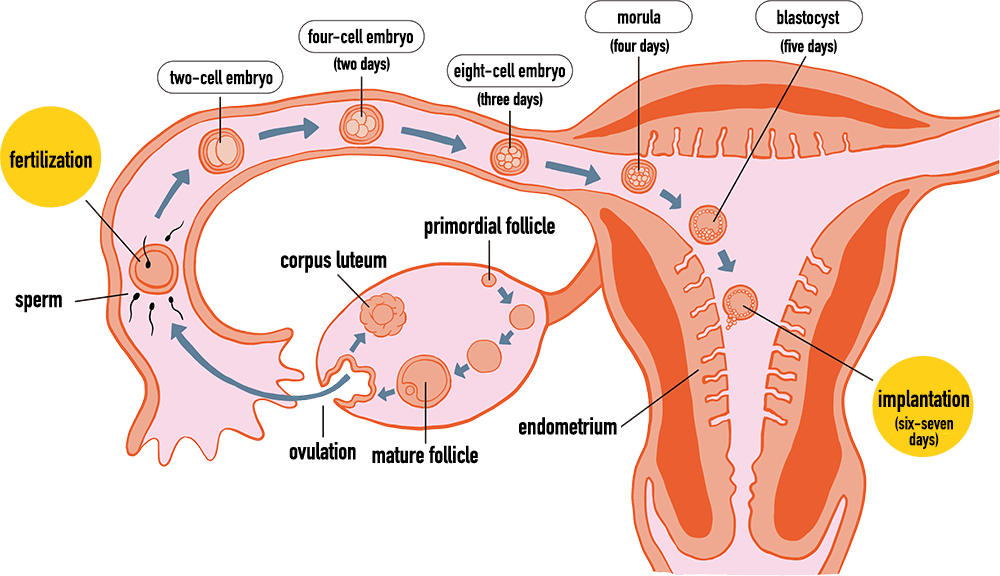
Various factors are involved in pregnancy. Today, it is estimated that one in six couples suffers from infertility (the inability to conceive between a man and a woman wishing for pregnancy and having sexual intercourse for over a period of a year without any birth control), and this is not small in number. In the past, the main cause of infertility was for medical reasons, such as blocked fallopian tubes. However, in the present world of late childbirth, many couples have difficulty conceiving because of women who are of older age. Additionally, men can be infertile too, and sperm should be examined in such cases.
The gestation period is approximately 10 months, as in the phrase “10 months and 10 days”. In Japan, one month is calculated as 28 days; the expected delivery date is 280 days from the first day of the last menstrual period. The implanted fertilized egg grows and begins to form the central nervous system, heart, and lungs. Its heartbeat can be heard at around six weeks.
After seven weeks of gestation, an "embryo" is formed. After eight weeks of gestation, a "fetus" with head and limbs are clearly defined. From 10 weeks of pregnancy, the fetus starts growing rapidly, with nutrient-rich blood supplied by the umbilical cord. Around 36 weeks, preparation for delivery begins, and the baby is born.
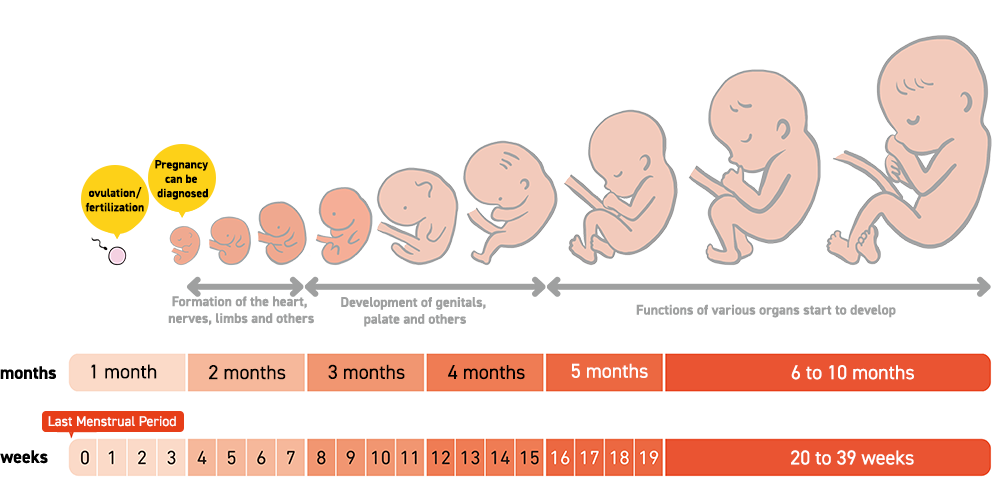
In highly developed countries*1, the total fertility rate (the number of children a woman would have in her lifetime, and by definition, it is "the sum of age-specific fertility rates for women aged between 15 and 49 years") continues to decline and is 1.34 in Japan in 2020. Many countries in Africa have total fertility rates of over 4.0; in Niger, it is as high as 6.74.
However, the global total fertility rate has been gradually declining, and this trend is expected to continue. Highly developed countries have declining birth rates and underdeveloped countries*2 have high fertility and death rates. While the lives born may be the same, their circumstances are different.
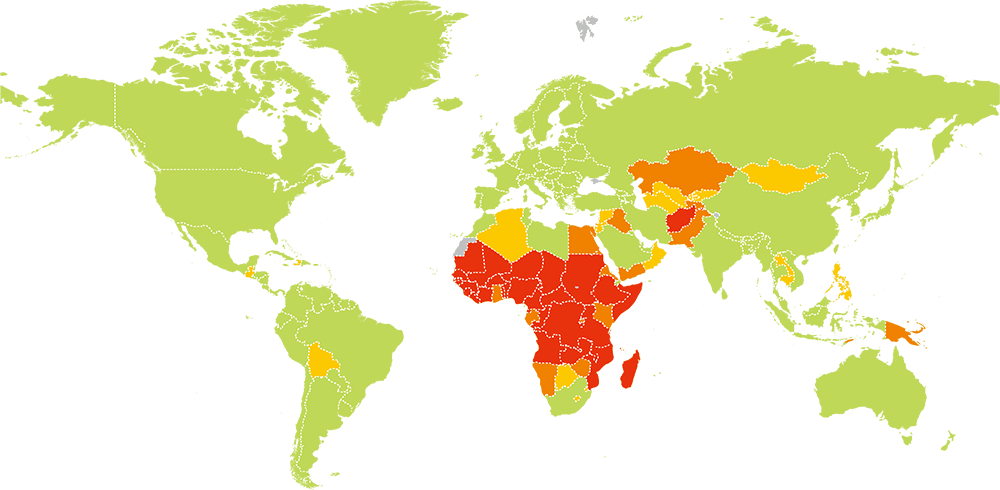

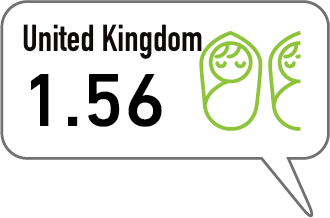
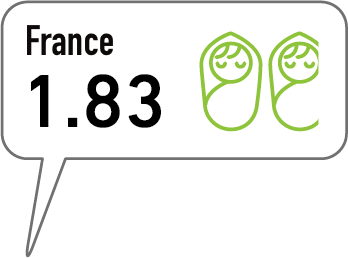
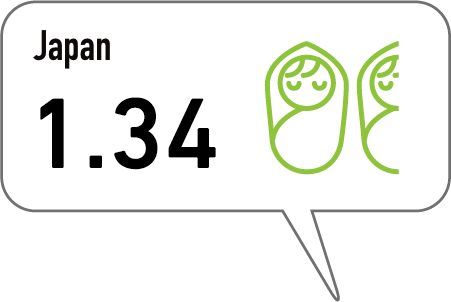
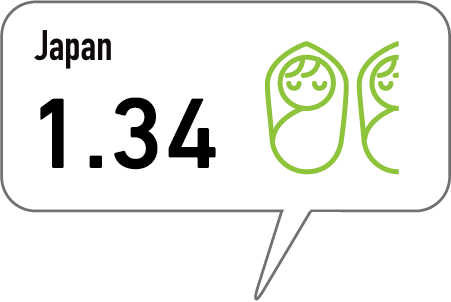
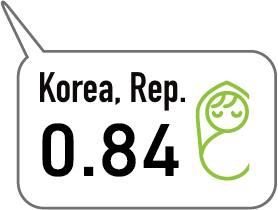
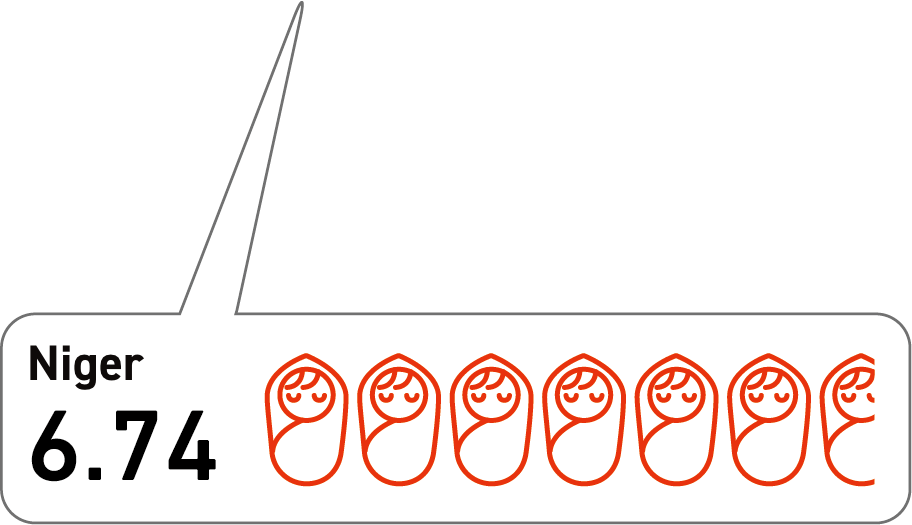
Even in the same region, total fertility rates vary. In France, for example, the total fertility rate recovered from 1.66 in 1993 to 2.02 in 2010 owing to a gamut of childcare services, enhanced measures to support work and childcare balance, and generous family allowances. In 2020, it was 1.83, the highest in the European Union. The state of economy and support systems, too, affect birthrate.
Pregnancy and childbirth are associated with the risk of death for the pregnant woman as well as the baby; however, the risk differs depending on the country or region. The maternal mortality rate in Africa, especially in Western and Central African countries, is particularly high, approximately 3.2 times higher than the global average. Additionally, the neonatal (less than 28 days old) mortality rate is also about 1.8 times higher than the global average.
Sub-Saharan Africa and South Asia account for 80% of maternal and new-born deaths worldwide. In countries facing conflict or humanitarian crises, the provision of medical care is often inadequate, and women and children often die because they cannot receive the care they need. Perinatal and medical care are important for reducing mortality rates.